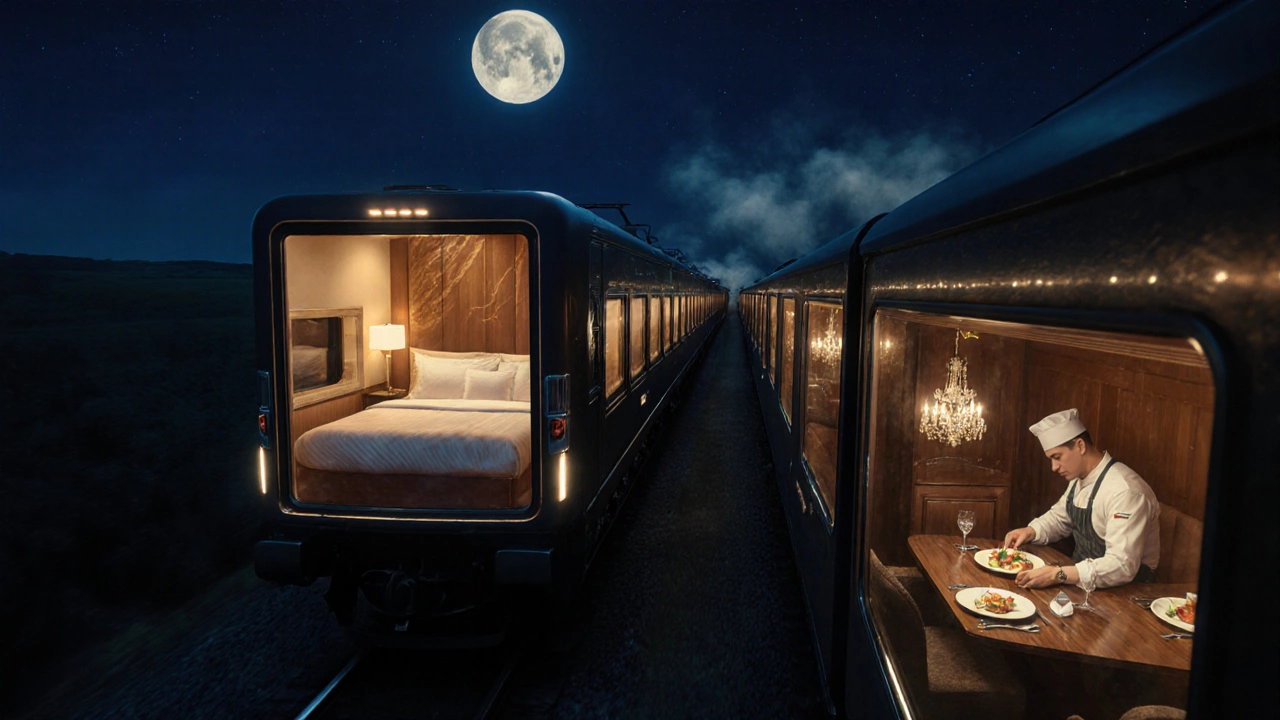
Explore why sleeper trains carry a high price tag, from luxury amenities and rail infrastructure to staffing and dynamic pricing, and learn tips to save on night‑rail travel.
When planning a rail adventure, sleeper trains, rail cars equipped with beds that let passengers rest while the train moves. Also known as overnight trains, they turn long journeys into comfortable nights on tracks.
Not all sleeper cars are created equal. On one end you have luxury sleeper trains, high‑end rail services offering private cabins, fine dining, and premium service that feel more like boutique hotels on wheels. On the other end, budget berths in India or Eastern Europe provide basic bunks and shared facilities, perfect for travelers watching every rupee. Sleeper trains encompass both extremes, meaning you can choose comfort level, price, and adventure style all in one ticket.
For older travelers, comfort isn’t just a luxury – it’s a necessity. senior train travel, rail options that focus on accessibility, safety, and discounts for older passengers often includes wider aisles, lower‑step berths, and dedicated assistance staff. Many operators also roll out early‑bird discounts and flexible cancellation policies, so seniors can plan trips without the stress of last‑minute changes. Senior train travel benefits from accessible berths, making long distances feel less exhausting.
Across the United States, the Amtrak network runs several iconic sleeper routes – the California Zephyr, the Coast Starlight, and the Empire Builder, to name a few. These lines blend the romance of classic rail with modern amenities, and some even offer deluxe cabins that rival five‑star hotels. US rail network offers multiple sleeper routes, giving travelers a chance to see breathtaking landscapes from a cozy berth while the scenery rolls by.
India, on the other hand, runs one of the world’s largest sleeper systems. From the famous Rajdhani and Shatabdi services to regional night trains, Indian sleeper trains support budget tourism by providing affordable sleeping arrangements, pantry service, and reliable schedules even in remote areas. Indian sleeper trains support budget tourism, meaning they’re a go‑to choice for backpackers and families alike.
Booking a sleeper berth can feel tricky, but a few simple steps make it painless. First, decide which class fits your needs – a simple lower‑berth, a comfortable AC 3‑tier, or a private cabin. Next, check the reservation window; most railways open bookings 30‑60 days ahead. Finally, confirm your berth type during the ticket purchase to avoid surprises at the station. Sleeper trains require berth reservations, so securing your spot early guarantees you won’t end up on a standing ticket.
Why do these trains matter beyond a place to sleep? They’re a tourism engine, connecting remote attractions with major cities and allowing travelers to maximize daylight hours for sightseeing. When you travel overnight, you wake up fresh in a new destination, ready to explore heritage sites, beach towns, or mountain villages without losing a day to travel. This efficiency explains why many of our articles – from the best month to visit South India to safety guides for 2025 – often reference sleeper options as a key part of the itinerary.
Below you’ll find a curated list of articles that dive deeper into every angle of sleeper train travel – from luxury experiences in the US to budget-friendly journeys across India, plus tips for seniors and booking hacks. Keep reading to uncover practical advice, destination ideas, and the latest trends shaping overnight rail travel today.

Explore why sleeper trains carry a high price tag, from luxury amenities and rail infrastructure to staffing and dynamic pricing, and learn tips to save on night‑rail travel.